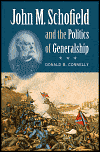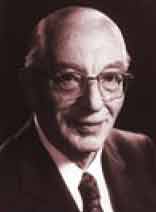
When the journalist-turned-history-writer
Allan Nevins founded his own history society it had two major aims: popularize what he called "dry as dust" history and begin publishing a pop history magazine for a mass audience.
The magazine he founded,
American Heritage, was very successful during the Civil War Centennial. Its success has been an albatross around the necks of deep Civil War readers for almost 50 years.
Nevins' stable of editors and writers, Catton and Sears among them, developed what non-journalists would call "a winning formula for success." Within journalism it's called "a successful editorial policy."
What brings people back to serials, issue after issue, is the experience of pleasurable sameness mixed with the odd surprise. That is the magic of good "editorial policy." You maintain that policy by soliciting and cultivating writers with compatible views and by acting with surgical coldness against the others. In the case of a history magazine, there is a dangerous side effect. Editorial policy can easily resolve itself into a set of historical doctrines dogmatically enforced by editors. At
AH, the policy needed to do good business became Civil War historical doctrine.
As a naive mass audience gobbled up
AH, it unknowingly ingested a highly specific and ahistorical view of the war ... an view heavily laden with recycled Republican newspaper analysis developed after 1860.
But the public couldn't get enough of it. They not only bought AH-issued books about the ACW, they followed the AH article writers into their own book projects - projects that carried the AH editorial policies outside Nevins' editorial conference rooms and into trade publishing.
AH constituted a de facto network of pop authors and writers helping each other get deals, endorsing books, sitting on prize committees. To the publishing industry, these people represented publishing success and a certain level "normalcy." The doctrines they opposed were marginalized and viewed, within trade publishing, as odd and risky.
A generation of young Civil War buffs who read widely in the 1960s, has come to the fore under the profound influence of Nevins' editorial policy. Many of them are now professors sitting on two stools, doing whatever serious research is required by academic norms and lusting in their hearts to write the next blockbuster nonfiction Oprah offering. They don't fit well into the universities and the universities tend to distrust them.
James McPherson has provided a certain amount of "cover" for these Centennial-influenced academics. A Centennialist himself, he represents a certain amount of academic legitimacy in the same way that a successful business represents legitimacy.
As an obscure young race relations historian during the Centennial years, McPherson absorbed the editorial policy of
American Heritage and internalized it. When the time came to write a one-volume history of the war, McPherson mined Nevins' network's published output to recapitulate the war as
AH saw it. The popularity of
Battle Cry of Freedom has revived Nevins' editorial choices and carried them into a new century.
Which brings me (finally) toward the point of this post. The military professionals running the armed services today have an immense appetite for nonfiction beach reading. They command organizations that until a decade or two ago published excellent, highly technical historical monographs. It is baffling to see my generation of generals endorse reading lists made up of bus station newsrack literature.
Is it nostalgia for AH? Or have they, in the course of their advance degrees, come under the influence of a certain generation of historians occupying academic chairs?
Case in point - the Air Force - a
technical branch of the services. The chief of staff's new additions to *his* reading list are
80% easy reading. Do jet engine mechanics rely on easy reading to learn their craft? How about the strategic missile command - are they getting their know-how doled out in grand generalizations?
I am very nervous about "professionals" with access to nuclear stockpiles considering
Battle Cry of Freedom as professional development material. Makes me wonder how far down "professional" has been dumbed.
For a deeper chill, click on any of
these links and read
the incompetent review behind each Air Force book recommendation.
If you want to be taken seriously,
mon general, show some seriousness.
(Photo, above right: the chief of staff's reading list depicted as a military aircraft.)
 Sometimes you see a headline that calls out from the Civil War era and you stop and stare in amazement. The Congressional newspaper The Hill had one today. I noticed it in the district this morning (the story is not online however). The head: Recriminations on Architecture of the Capitol...
Sometimes you see a headline that calls out from the Civil War era and you stop and stare in amazement. The Congressional newspaper The Hill had one today. I noticed it in the district this morning (the story is not online however). The head: Recriminations on Architecture of the Capitol...


















